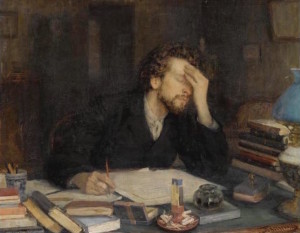WRITE WAY, JUST ONE WRITER”S METHOD
Writing methods are as individual as writers themselves. But I always love to read about what others are doing for two reasons. One, I find camaraderie there, because inevitably I will see things in other writers’ methods that are the same or at least similar to mine. It’s good as a writer to know you are not alone in this bit of creative craziness.
Two, I might come across new and good ideas to add to my method or streamline what I am already doing.
Since there was a discussion about our methods on one of the forums I attend, I thought I’d share a little bit about it here. Besides my four books that are presently published, I have two more written and in production, and another nearly complete. So over the course of nearly seven books, this is the method I have developed.
I start with the spark of inspiration. When I get it, even if it’s still very small, I start writing out the notes on what I have, even though I know it is going to morph as I go. Whether you want to call it stream of conscious writing or brainstorming, or just problem solving, I do it all at my keyboard which conditions me to be in the creative frame of mind when I am typing. It allows ideas to flow through spontaneous inspiration as well as just gritting through research and solving the problems of the story.
The exciting thing about this part of the story making is you can explore all the possible options, follow rabbit holes and what if’s, try out characters, explore backstory, and of course world build.
I have a system for note keeping and by the time a story is written, I will have a large volume of notes to go with it. These are notes, not necessarily plot, as you will see below.
For the last four books I scheduled my rough draft writing to come during the NaNoWriMo challenges, which includes the Camp NaNoWriMo challenges. Knowing the challenge is looming before me is like having the story on a deadline. I know I have to get the story figured out before Nano arrives or I will be struggling.
By figuring the story out, I don’t mean plot exactly, I mean, what is this story about? Who are the characters? What is their conflict? What past pains strengthen and drive the conflict? What are their goals? What are the obstacles? How do they fit into the overall arc of the series? If I can figure out what the main story question is and/or what the theme is, all the better, though sometimes I don’t know the theme until the end of the book.
All of this is again done at my keyboard with extensive notes and research.
Before I sit down to write, I make a list of possible scenes. By doing this I begin to see the pattern of the plot points. I don’t plot in detail so much as I figure out the points that will give the story structure. By the time Nano arrives I may have a full list of high points that will get the story told, but I know it is likely going to morph on me again as I get into actually writing the story, so I don’t hold myself to the list. It’s a guideline not a rule. Often brand new, and really great scenes present themselves during the actual writing.
During the Nano challenge, I try to get the whole story told in a very rough draft. I don’t always get to the end. As in this last time, it is almost three weeks after April’s Camp Nano and I am still writing. But I try to tell it all together, quickly, all in one piece to keep continuity.
After the rough is finished, the manuscript will go through several edits, which is a whole other subject for another time. Until then, thanks for reading.

